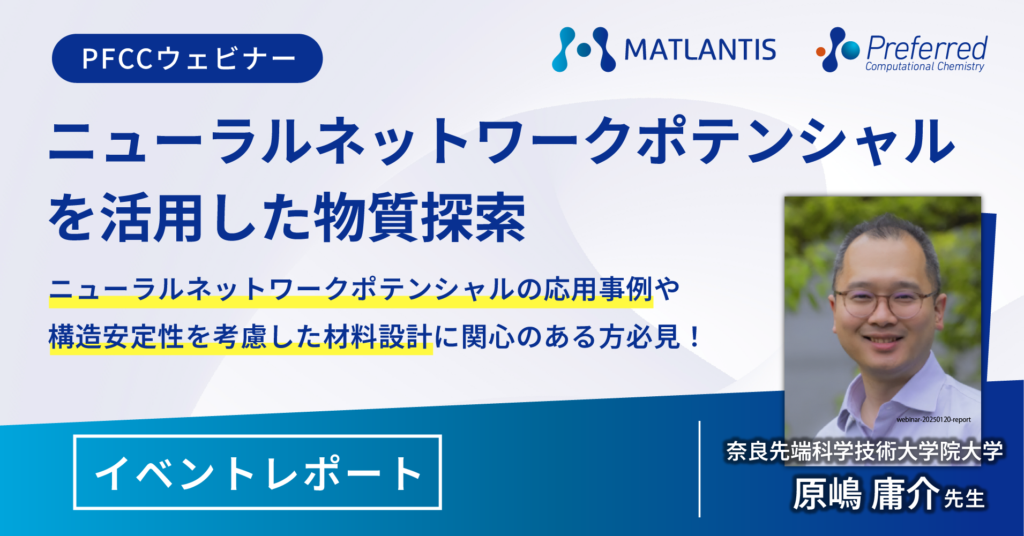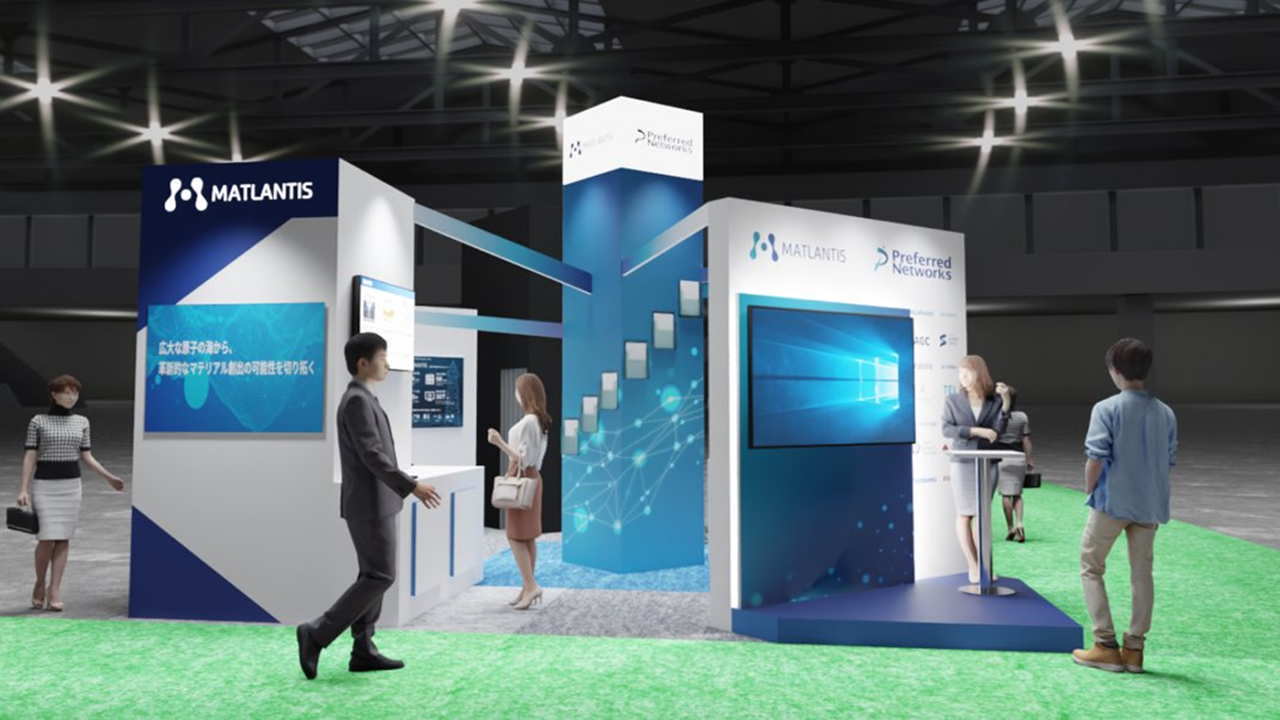Video Streaming
Webinars
Online2025.5.20 (JPN)
[Archived] Lecture by Professor Yosuke Harashima, Nara Institute of Science and Technology Event Report

In this webinar, Professor Yosuke Harashima from the Nara Institute of Science and Technology gave a talk on the theme of "Materials Discovery Using Neural Network Potential," in which he shared his latest research results using Matlantis. More than 170 people attended the session, which was very meaningful, with lively Q&A sessions.
Even if you were unable to attend the webinar, we hope you will take a look at the materials and videos to make use of the latest research findings.
Participant comments
- I really understood the power of an approach that utilizes the potential of machine learning.
- The comparison between experiments and calculations was introduced, and I learned a lot.
- I was able to hear about some very groundbreaking cutting-edge research.
Highlights of the lecture
Introduction
In the search for new substances, in addition to the various excellent physical properties, the compounds must be synthesizable in the first place, and it is important to analyze their structural stability along with their physical properties.
In this presentation, an analysis was presented that combines chemical composition search using a generation model and evaluation of structural stability at finite temperatures with neural network potentials.
Multi-Objective Generative Adversarial Network for Inorganic Chemical Compositions
In the first half of the presentation, a method combining Multi-Objective Composition Generative Adversarial Networks (MOCGAN) and Matlantis was introduced as an approach to the inverse problem (proposing materials that satisfy desired physical properties).
Specifically, a method was introduced for conducting large-scale new material searches by generating a chemical composition that satisfies the desired physical properties using MOCGAN, creating a crystal structure for that chemical composition using CSP (Crystal Structure Prediction), and then optimizing the structure of that crystal structure using Matlantis. *The results of the verification (data) are not public at this stage.
Phase stability at finite temperatures by impurity doping
In the second half of the lecture, an analytical method for evaluating the structural stability at finite temperatures was introduced as an idea for future use of Matlantis, using materials for semiconductor devices as an example.
Specifically, the effect of impurity doping on stabilizing the tetragonal phase, which exhibits a high dielectric constant, at room temperature was introduced for crystalline polymorphic materials such as hafnia (HfO₂) and zirconia (ZrO₂). In the future, this analysis will be expanded to other material systems using Matlantis.
Download materials and watch videos here
公開日:2025.06.05



